|
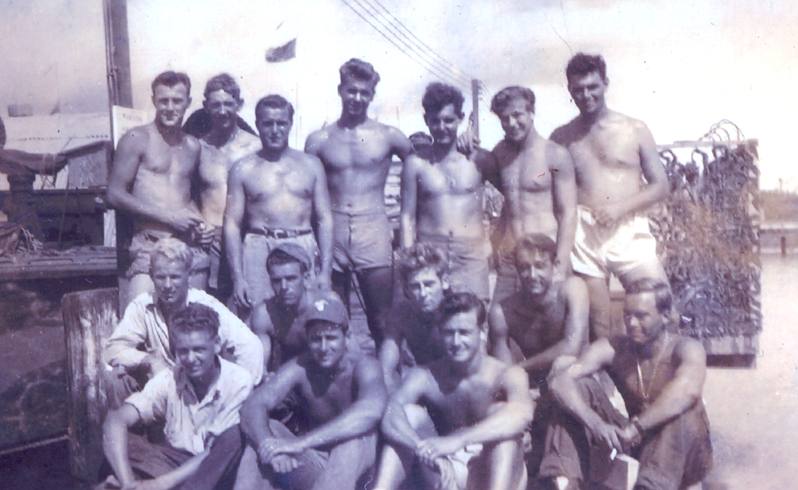 | While most of this site focuses on what Jim did during operations, training, etc., I think it's important to point out that during the war, Pop and his fellow sailors did a fair amount of "nothing" - stuff that didn't make action reports. With PT operations coming mostly at night, the crew had all day to rest up after a mission or work on their boats. |
|
While sailors spent a good chunk of their day on their boats, the maintenance-dependent craft were always staged at either a base or alongside a tender ship. During Pop's tours in the Mediterranean and the South Pacific, he was pretty much always at a base. There were brief times where PT-243 was photographed nesting along side a tender ship, but they appeared to be temporary situations during Jim's time with the squadron. | 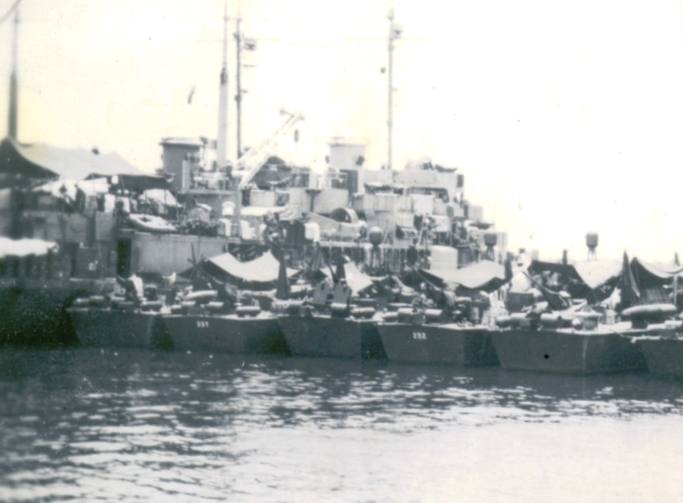 |
|
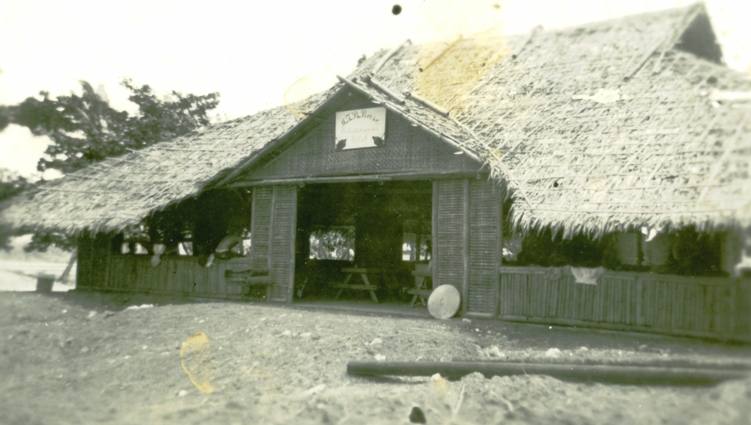 | From a 2004 taped interview: "After a mission, you'd go ashore where there was a mess hall and you'd have breakfast. Then you'd go down and the first thing you'd do is your cleaning stations, where you had to clean the boat and all the quarters. |
|
"Pretty much during the day you were free. Some places had a ballfield and a ball team, you could play baseball. There was a beach; you could go swimming. We operated mainly at night, so you days were relatively free." | 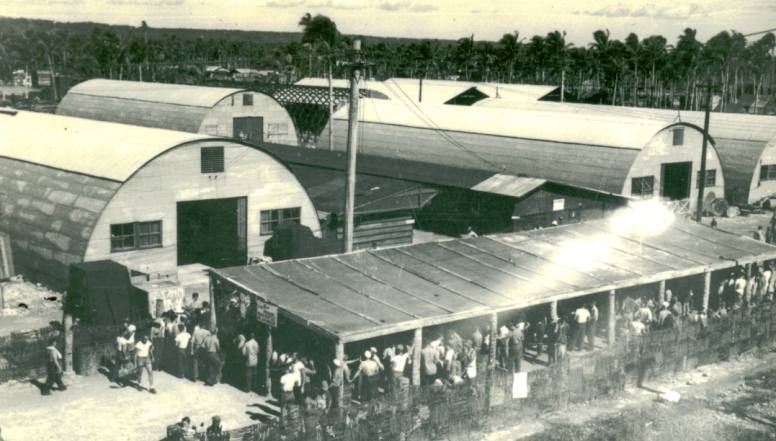 |
|
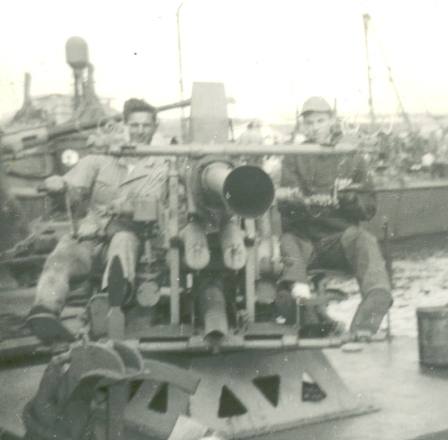 | "Around four o'clock in the afternoon, we'd clean the guns, reassemble them and load ammunition. We would go ashore, get something to eat, take a shower and change our clothes and then take off on our mission. |
|
| "We would go out around five o'clock so that by the time we got to enemy territory it was dark which is what we wanted. We would stay patrolling all night long and then around five in the morning, we'd get out of there before it was light so they wouldn't see us. Then you'd come back and do it all over again." | 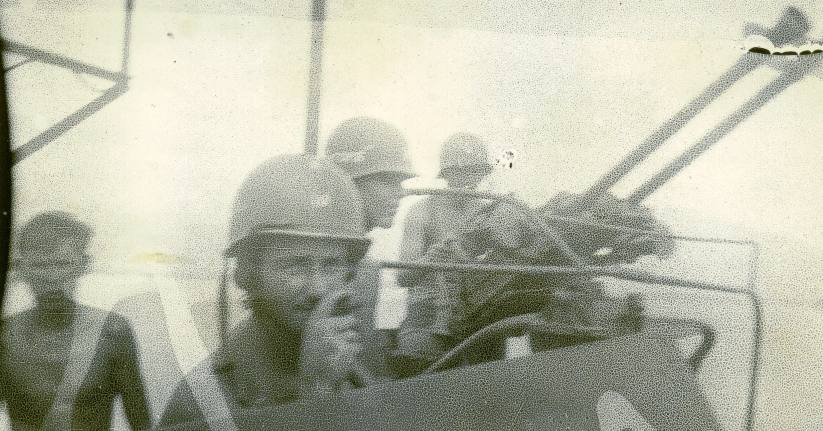 |
|
| Russ Pullano, a Ron 9 sailor during the war, was nice enough to share with me his typical mission routine as a Quartermaster:
"The QM's duties on our PT boat was to keep the log, do the navigating, which was not a complicated task because we had radar and were mostly able to follow the contours and compare them with the charts. However we had what was called "dead reckoning." This consisted of logging the compass direction we were traveling in and the length of time and speed before changing course. Therefore, we were plotting our trail so to speak.
"By radio, we were in contact with the other boats on patrol with us and the base. If a PBY (amphibious patrol plane) was assisting us on a given patrol, we were in contact with him...we (also) manned the radar.
"We were in contact with the officer manning the wheel through a voice tube between the chartroom and the cockpit.
"When the boat was underway the radioman and the QM served in the chartroom, two hours on and two hours off. When not in the chartroom I would be standing topside on the alert for anything that may be of interest, such as a plane, an obstacle in the water or whatever."
|
|
| Jim also had a General Quarters station he was responsible for during combat. It appears from photographs and notes he left that he had two positions at various times during the war; the first was a loader on a 20mm cannon, the other as a gunner on the twin .50-caliber machine guns. | 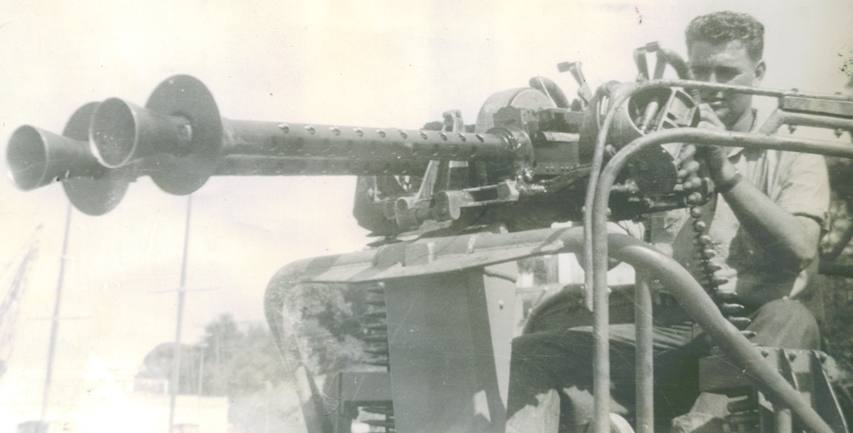 |
|
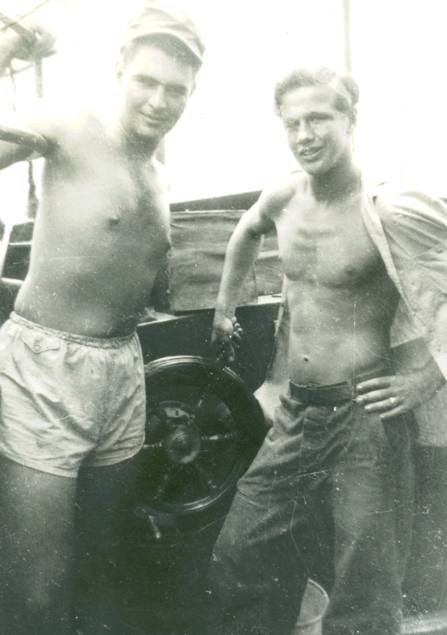 | Pop never talked about it directly, but from all the photographs he has of his time in the Navy, the only ones where he appears to be in any kind of uniform were the formal portraits and the ones taken stateside. The PT Navy seemed to operate on a more casual basis when it came to appearance. That probably explains why Pop's original winter (dark blue) uniform is still in as-new condition to this day. |
|
I would imagine that the combination of the heat and the hands-on type of operations PT sailors did help foster a "be comfortable as long as you're effective" environment.
To be continued... | 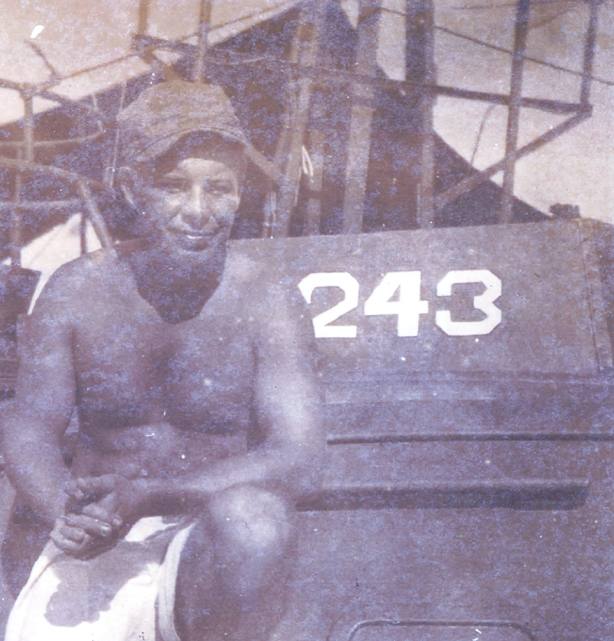 |
|
|
|
|
|
